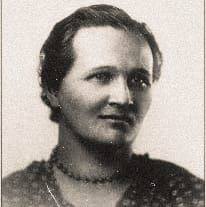In Paris, 1776, a young girl named Sophie Germain was born into a world where mathematics was forbidden to her.
Her family hid her books, believing numbers were no place for a woman. At night, they even took away her lamps. But Sophie refused to surrender her passion. Wrapped in blankets against the cold, she solved equations by the dim glow of a candle.
When she read about Archimedes, who died defending his work, she made a decision: she too would devote her life to mathematics.
At 18, barred from the new École Polytechnique, Sophie found a way in. She borrowed lecture notes and submitted her work under a false name — “Monsieur LeBlanc.” Her papers stunned the great mathematician Joseph-Louis Lagrange. When he discovered this brilliant mind was a young woman, he didn’t dismiss her — he encouraged her.
Her greatest challenge came when the Paris Academy of Sciences issued a prize problem: the vibrations of elastic plates, a puzzle unsolved by the best mathematicians of her time. For years she labored, undeterred by failure. Finally, in 1816, she triumphed — becoming the first woman ever to win the Academy’s prize.
She didn’t stop there. Sophie made breakthroughs in number theory, advancing work on Fermat’s Last Theorem centuries before it was finally solved. Her name became attached to results still used today: Sophie Germain’s Theorem.
Yet, despite her brilliance, society denied her the honors given to men. She could not hold a university post, nor even attend Academy sessions.
Sophie Germain died in 1831, at just 55, her genius never fully recognized in her lifetime.
But today, her name endures in theorems, in the Sophie Germain Prize, and even on the surface of Venus, where a crater bears her name.
She proved that no locked door, no extinguished lamp, and no prejudice could silence a mind set on truth.✍️
